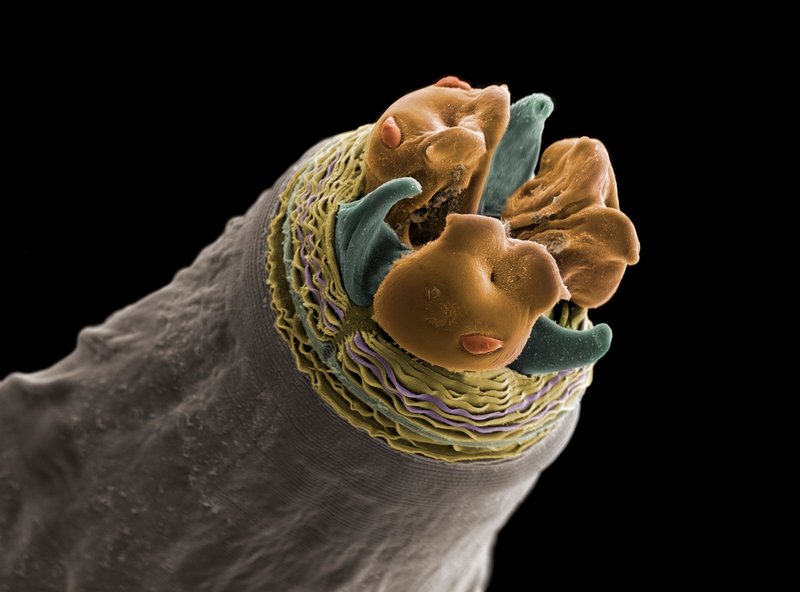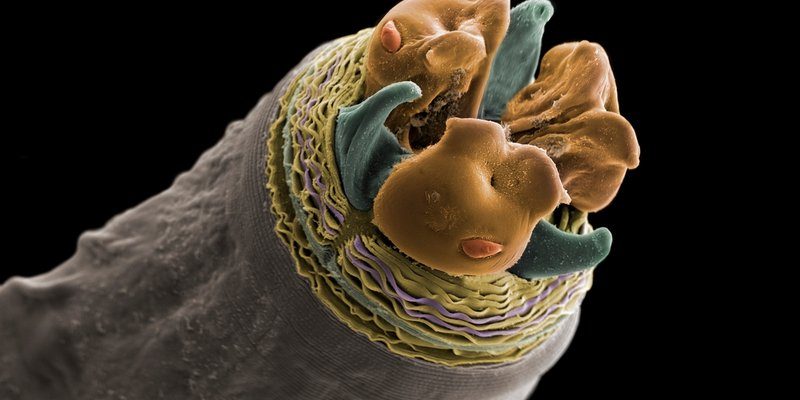
Now, let’s dive into the world of microworms, exploring their habitat preferences in the wild. You may be surprised to find out how specific their needs are when it comes to survival and reproduction. From the types of environments they prefer to the interactions they have with their surroundings, understanding these tiny creatures is a crucial step in appreciating the delicate balance of nature.
What Are Microworms?
Microworms are tiny nematodes, typically measuring just about 1 to 2 millimeters in length. They belong to various species like *Panagrellus redivivus* and thrive in moist environments. Unlike their larger relatives, you won’t find microworms hopping around in your backyard; instead, they prefer the damp, rich soil where organic matter is plentiful. You might picture them as tiny, squirming noodles in the earth, feasting on decaying plant material.
These creatures are often used as a nutritious food source in aquarium settings. They provide an excellent dietary option for fry and small fish, adding to their appeal among fish enthusiasts. Microworms are not just interesting from a biological perspective—they have a practical purpose that highlights their habitat’s importance.
Understanding their habitat preferences helps us appreciate why they are vital to the ecosystem. They contribute to nutrient cycling, breaking down organic materials, and enhancing soil fertility. This characteristic makes them an important player in the grand scheme of life on Earth.
Preferred Soil Conditions
Microworms are most comfortable in rich, organic soil. This means they thrive in areas where there’s plenty of decaying plant matter and a high level of moisture. You might think of this kind of soil as a natural buffet for microworms, providing all the nutrients they need to survive. Generally, they prefer slightly acidic to neutral pH levels, making forest floors and compost heaps ideal habitats.
The texture of the soil also plays a significant role in their habitat preference. They thrive best in loamy soil because it retains moisture while allowing air to circulate. Imagine trying to walk on a sandy beach versus a lush forest floor—loamy soil is like the soft carpet of the earth, perfect for these little creatures to navigate and feed.
In contrast, compacted or overly dry soil is a no-go for microworms. Just like we wouldn’t want to stroll through a drought-stricken desert, these squirming wonders need damp conditions to stay alive and reproduce successfully.
Moisture Levels and Habitat Choice
Moisture is a crucial factor for the survival of microworms. They need damp environments to thrive, which you can often find near water sources or in shaded areas. Think of it like finding a cozy coffee shop on a rainy day; they prefer the humid, shady corners of the forest or garden.
They usually live in decomposing leaves, wet soil, or even within decaying organic matter like wood. Surprisingly, microworms can often be found in compost piles, where they contribute to breaking down waste. By doing so, they create nutrient-rich soil, proving their value not just for themselves but also for the larger ecosystem.
However, if their habitat becomes too dry, microworms struggle to survive. Overly dry soil conditions can lead to dehydration, making it impossible for them to thrive. So, a balance of moisture is essential for their continued existence.
Temperature Preferences
Temperature is another important factor in determining where microworms will live. They prefer moderate temperatures, typically between 20°C to 30°C (68°F to 86°F). This range offers an ideal environment for their growth and reproduction. Think of it like a comfortable room temperature for you—a little hotter or colder, and it becomes less enjoyable.
When temperatures rise too high, microworms may face heat stress, which can lead to death if the conditions don’t improve. Conversely, too low a temperature can slow their metabolism, making it difficult for them to reproduce. This temperature range is crucial not just for their day-to-day survival but also for ensuring their populations remain stable in the wild.
By understanding these temperature preferences, we can appreciate the delicate balance of their chosen habitats and why changes in climate could impact their populations significantly.
Interactions with Other Organisms
Microworms don’t exist in a vacuum; they interact with various other organisms in their habitats. For instance, they are often found alongside beneficial bacteria and fungi. These organisms work together to break down organic matter, creating a rich environment for the microworms. This relationship is symbiotic, meaning both parties benefit. You might think of it as a small community working together to keep things clean and nutrient-rich.
However, they also face threats from predatory species, such as certain nematodes and larger soil-dwelling organisms. The presence of these predators can significantly influence their populations and distribution. Just as a small coffee shop might struggle to survive if a large franchise opened nearby, microworms must adapt to their surroundings to thrive despite potential threats.
Also, when they encounter other microorganisms, it can create a competitive atmosphere. In those moments, they need to maximize their resources, leading to unique adaptations in their behavior and reproductive strategies.
Factors Affecting Habitat Quality
Several factors can affect the quality of a microworm’s habitat. Changes in soil composition, moisture levels, and temperature can all influence their environment. Human activity, such as construction or agriculture, can drastically alter their living conditions, often leading to habitat loss.
For example, if a new housing development replaces a lush forest, the natural habitat microworms rely on could disappear almost overnight. This scenario is similar to a beloved park being paved over for a new road; the wildlife that thrived there can be driven away or forced to adapt to harsh conditions.
Climate change is another significant factor that could impact microworm habitats. With rising temperatures and changing precipitation patterns, the delicate balance of their preferred environments is threatened. It’s a reminder of how interconnected our ecosystems are. Protecting their habitats not only supports microworms but also the larger community of life that relies on them.
In summary, understanding the habitat preferences of microworms is not just about knowing where these tiny creatures live; it’s about grasping their role in the ecosystem. They thrive in rich, moist environments where they can help break down organic matter, contributing significantly to soil health and nutrient cycling.
As we learn more about these little wonders, it becomes clear that protecting their habitats is essential for maintaining biodiversity. Just like we cherish our favorite spots—whether it’s that cozy coffee shop or a peaceful park—microworms have their own unique habitats that deserve our respect and protection. Remember, every little creature plays a part in the grand tapestry of life, and by preserving these ecosystems, we ensure a healthier planet for all of us.

